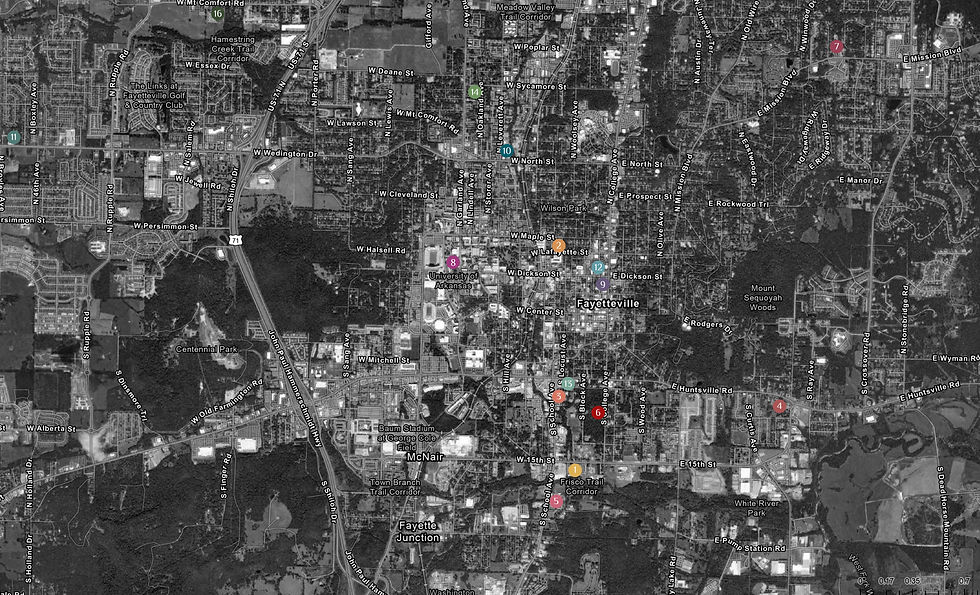Nature
- cnlents
- Nov 3, 2022
- 2 min read
Updated: Dec 11, 2022
It has been proven that humans benefit mentally and physically when exposed to nature. This exposure may be literal and direct, but it doesn't have to be. It can be some type of active or passive biophilia. No matter what it is, the positive impact this connection has on the health and well-being of people is unmatched. In Fayetteville, there is a pretty heavy emphasis on nature and encouraging people to be out in it. There are multiple programs in place that do just this. But exactly how much nature is there here to explore?
Urban Tree Canopy
Fayetteville does an urban tree canopy study every 10 years with the last one being in 2012. This study is a city-wide investigation into the current state of "Fayetteville's tree canopy, identified potential tree planting areas, and developed tools for incorporating urban forest benefits during policy and planning processes."

It found that Fayetteville had 36% tree canopy, 51% plantable space, and 13% unsuitable for tree planting. This 36% tree canopy is 4% shy of the nationally recommended 40% tree canopy. Based on these findings, there had been a 1.5% decrease in canopy cover since 2002. Below this tree canopy is broken down even further by land use, including commercial, residential, and industrial.

So what does this actually mean for a person's experience in Fayetteville? I think that this data highlights the strong natural aspect of the city. This tree canopy is really scattered throughout the city rather than grouped in a large area. It allows more people to have more direct access to nature. Plus, the Razorback trail going through Fayetteville allows for even easier access while promoting active transit at the same time. Personally, several different parks are within walking distance of my school or home and the trail passes by in a few places.

The map above highlights several parks in green that are either walkable or accessible via the razorback transit system for me. A few of the parks that are walkable include:
Hotz Park (neighborhood park)
The Gardens
Town Branch Trail Corridor (Trail Corridor)
World Peace Wetland Prairie (Natural Park / Conservation Area)
Markham Hill Park Land
Tsa La Gi Trail Corridor
Fay Jones Woods (Natural Park / Conservation Area)
Some of the parks accessible by utilizing the razorback transit system include:
Square Gardens (neighborhood park)
Great House Park (neighborhood park)
Walker Park (community park)
Wilson Park
Centennial Park (regional park)
Gregory Park (neighborhood park)
Mount Sequoyah Gardens (neighborhood park)
Habitat for Humanity Park Land (special use)
Park meadows Trail Corridor
Mount Sequoyah Woods (neighborhood park)
Bryce Davis Park (community park)
This list of parks is only a small fraction of the parks in Fayetteville and demonstrates how easy it is to access nature in Fayetteville.
Resources:




Comments